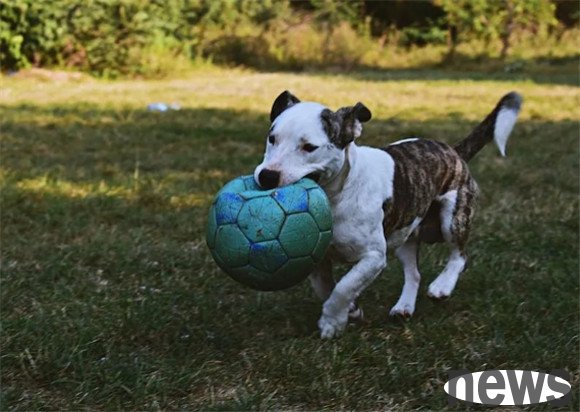Once you understand canine distemper, you will know how dangerous it is!
Canine distemper is a malignant infectious disease with the greatest risk and highest mortality rate to dogs, except for rabies. In the case of obvious clinical symptoms and confirmed cases, especially when neurological symptoms appear, the cure rate is basically less than 10%. Because the owner has emotional factors, it is difficult to decide whether to continue treatment or give up treatment at this time. So how to evaluate and who will decide life and death? This is a very realistic topic.
Overview of Canine Distemper
Canine Distemper, commonly known as dog distemper, is a serious canine disease that mainly harms puppies. The pathogen is canine distemper virus. Sick dogs are characterized by biphasic heat type, rhinitis, severe digestive tract disorders and respiratory inflammation. Encephalitis may occur in a few cases.
Etiology Analysis
All secretions and excretions (nose juice, saliva, tears, pericardial fluid, pleural fluid, ascites and urine) of sick dogs, as well as blood, cerebrospinal fluid, lymph nodes, liver, spleen, spinal cord and other organs contain a large amount of viruses, and can detoxify the outside world with respiratory secretions and urine. Healthy dogs are infected through the respiratory or digestive tract directly in contact with sick dogs or through contaminated air or food. In addition to the most vulnerable puppies with inseparable immunization, foxes and minks in fur animals are also very susceptible to canine distemper.
Clinical symptoms

Distemperature period is 3-9 days. Symptoms are diverse, which are related to the strength of virulence, environmental conditions, age and immune status. Usually, respiratory and digestive tract problems occur, and respiratory symptoms are mostly clinically common.
Nerve symptoms canine distemper mostly occurs in about 10 days of the above symptoms. Clinically, cases of keratosis of the foot pad and keratosis of the nose cause frequent neurological symptoms. The symptoms vary due to the different parts of the canine distemper virus invading the central nervous system. The virus is damaged in the brain, which is manifested as other neurological symptoms such as epilepsy, circle rotation, abnormal standing posture, unstable gait, ataxia, paroxysmal convulsions in the masticating muscles and limbs.
Especially for dogs that have not been immunized. Although symptomatic treatment is clinically performed, it is difficult to control the development of the disease and most of them die from neurological symptoms and failure. Partially recovered dogs can generally leave sequelae to varying degrees.
Preval characteristics
This disease can occur all year round, but it occurs more frequently in winter and spring. This disease has a certain periodicity and is a pandemic every three years. Dogs of different ages, genders and breeds can be infected, but underage puppies are the most susceptible. Purebred dogs and police dogs are more susceptible than native dogs, and have a severe reaction to the disease and a higher mortality rate. Once a dog in the same room is diagnosed with canine distemper, no matter how tight protective measures are taken, infection of dogs living in the same room cannot be avoided.
Cure influencing factors
1. Immune situation Dogs that have completed the immunization program, whether they are active or passive, can alleviate the onset of the disease.
2. Treatment timing Because the early stage of canine distemper is similar to the general cold symptoms, it is easy to delay the optimal control and treatment opportunity of the disease. The treatment effect of canine distemper is closely related to the establishment of the treatment plan. Appropriate treatment plans should reflect the basic principle of combining "treatment of symptoms and root causes" and combining pathogenic therapy and syndrome therapy. Clinical treatment is required, with combined traditional Chinese and Western medicine, and attention to keeping warm and nursing, and attention to strengthening nutrition.
Recurrence and reinfection
Generally speaking, recovered dogs will be immune for life. However, due to the damage to the immune system, dogs only need a long time to condition, and the dog's exercise time and intensity should be gradually increased on the basis of fully ensuring nutrition.
Can distemper is transmitted to humans?
This is a question that many friends are very concerned about. Although this virus is more likely to be transmitted between dogs, it will not be transmitted to humans due to the specificity of the virus between different species. It only spreads between dogs. Therefore, it is very important to immunize your dog regularly early and regularly: Note:
Dogs are lively animals. Even if they reunite with their owners for a short time, they usually express their longing and attachment to their owners in strong physical language. Therefore, it is difficult for dog owners to detect the early symptoms of canine distemper and miss the best time to treat canine distemper. When your dog suffers from distemper and has initial symptoms, the dog still does not affect food and is active and active, but the nose mirror begins to dry. Although many reasons can cause rhinoplasty to be chapped. If your dog has no internal and external injuries, you have taken effective management measures after you notice that your dog's nose lens is dry and cracked. The dog's nose lens is still not wet, it is getting thinner and dull, then please be careful, your dog may be an early symptom of canine distemper!
Any dog owner who has been suffering from canine distemper virus will be unforgettable about the power of canine distemper virus. Therefore, it is better to believe that it has it, diagnose and treat it in time, eliminate the virus on your dog in the bud, and enhance the immune function of your dog. Do not miss the best time for canine distemper treatment! Canine distemper disease has a long course and poor physical condition. Nursing work is particularly important in the treatment of dog distemper disease in the middle stage.
Warm reminder:
The chance of curing canine distemper is very low, and since you need to use biological products such as antibodies, the treatment cost is usually high. So how do we decide whether to treat or not? We recommend that in the early stages of the disease, we should actively cooperate with doctors to adopt comprehensive and systematic treatment of Chinese and Western treatment, pay attention to care and nutrition. If it is in the middle and late stages, especially when typical pneumonia or neurological symptoms, convulsions or the hemisphere of the top of the head, the possibility of cure is generally very low. Even if a very small number of people can survive, they will leave serious sequelae and affect the quality of life. Therefore, at this time, we recommend that the doctor clearly inform the owner, negotiate and consider the possibility of happiness.
















